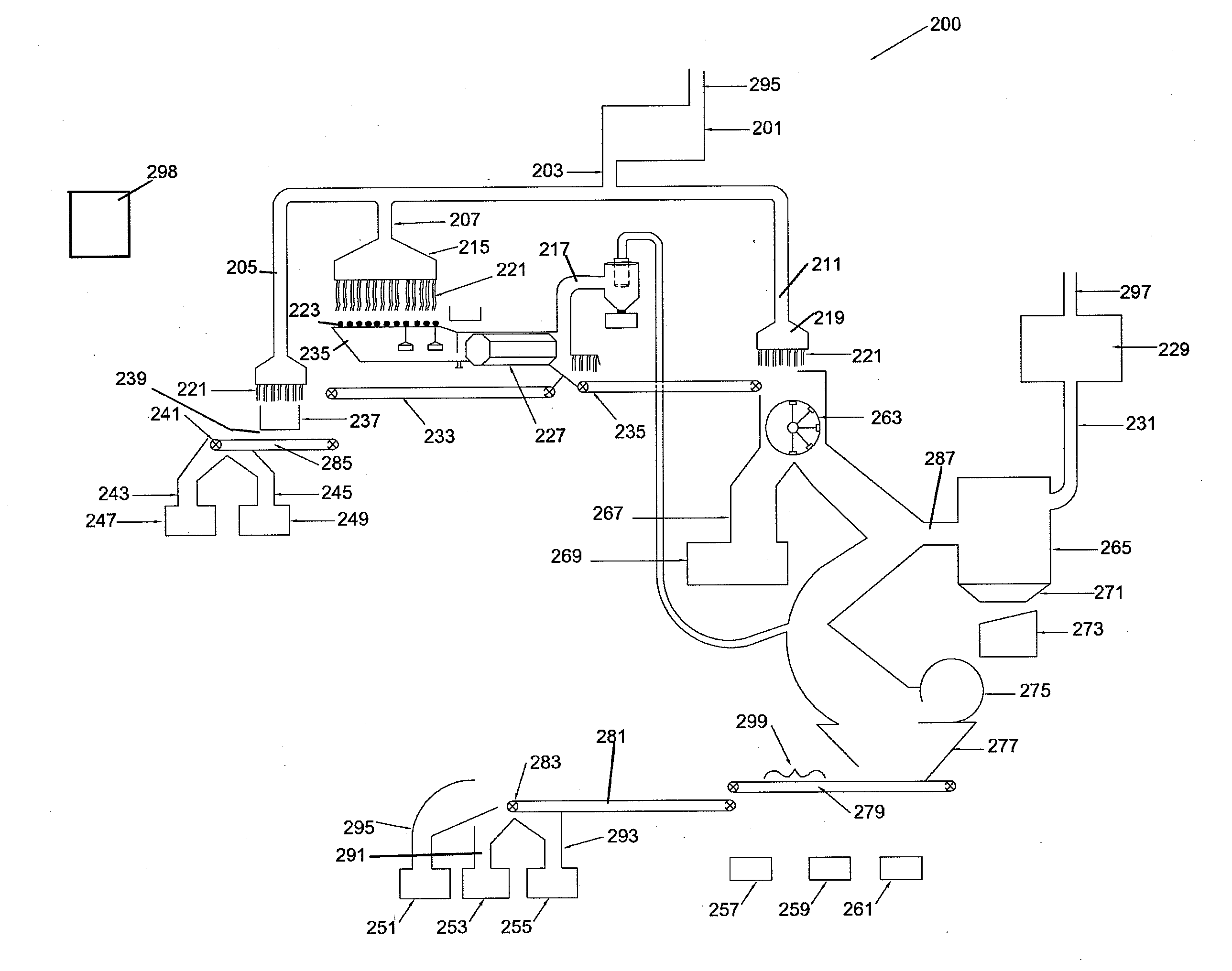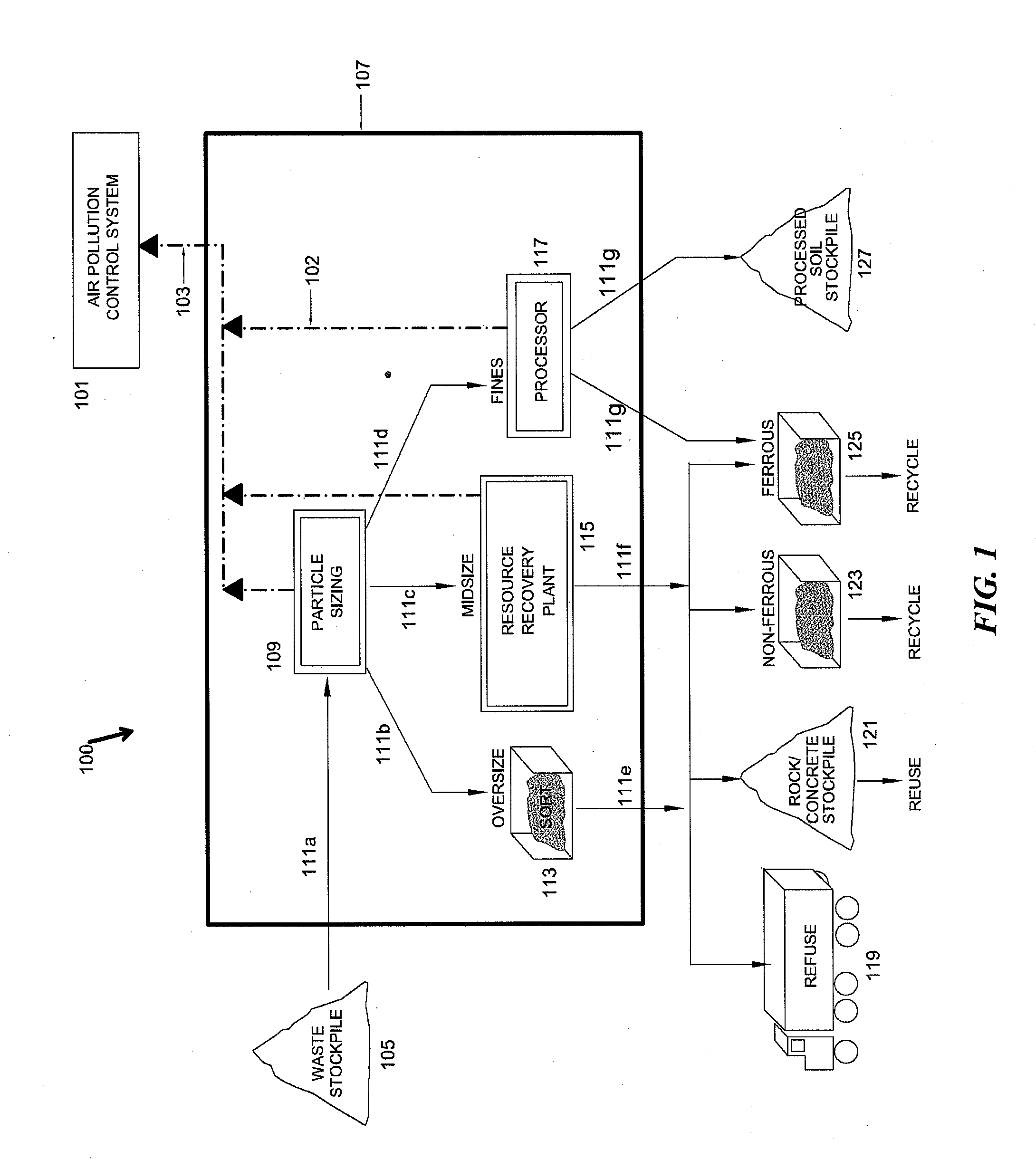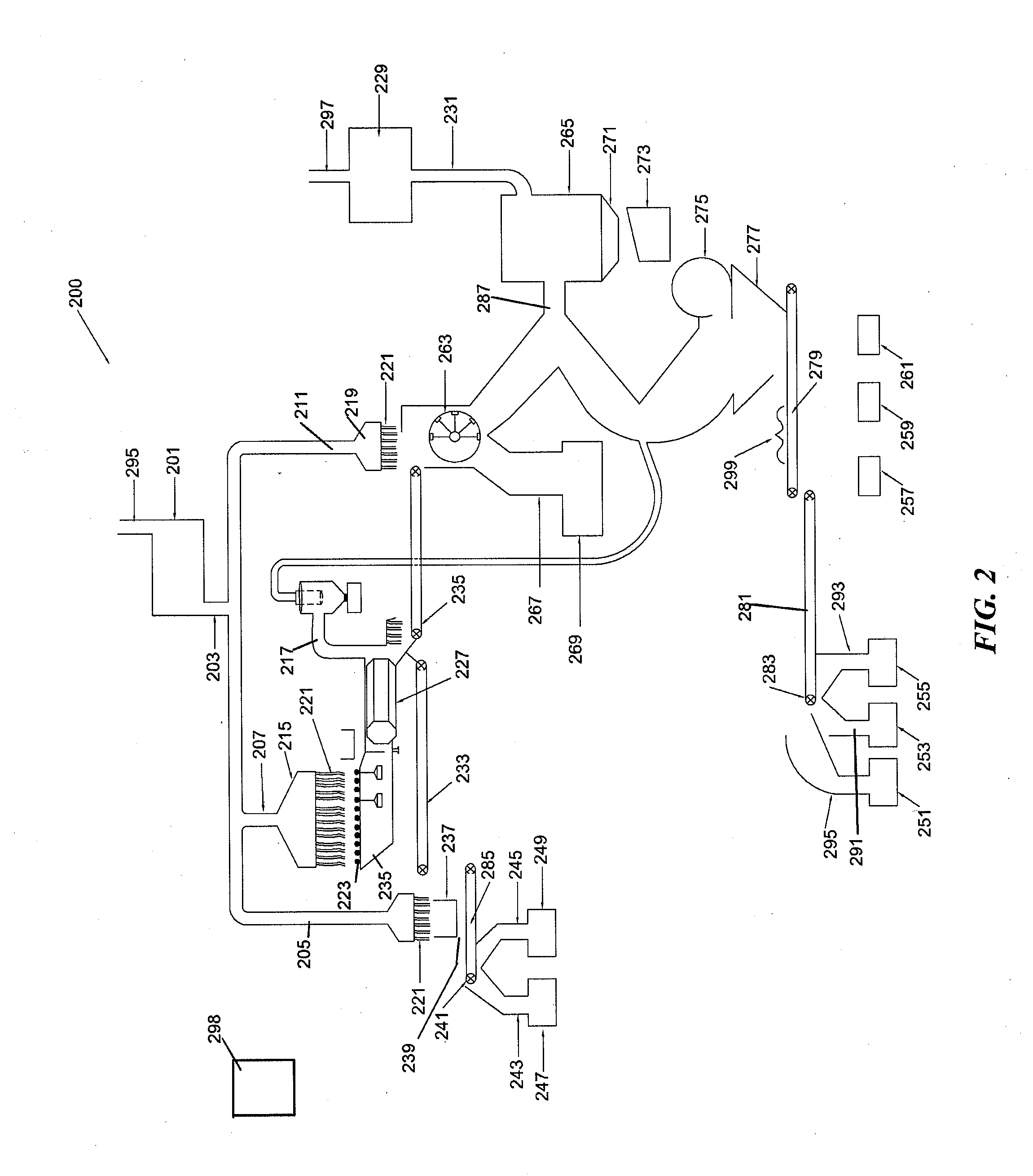[0008]The system, method, and devices disclosed herein each have several aspects, no single one of which is solely responsible for its desirable attributes. Without limiting the scope of this invention, its more prominent features will now be discussed briefly. After considering this discussion, and particularly after reading the section entitled “Detailed Description of Certain Embodiments,” one will understand how the features of the embodiments described herein provide advantages over other the prior art.
[0009]In one embodiment a system for recovering materials from soil includes a first separator comprising a first separation element, the first separator configured to separate recoverable material bearing soil into a first portion comprising large recoverable materials that did not pass through the first separation element and a second portion of recoverable material bearing soil that did pass through the first separation element, the second portion comprising soil and recoverable materials smaller than the large recoverable materials, a first conveyance positioned to receive the second portion from the first separator, wherein first conveyance is configured to move the second portion of recoverable material bearing soil to another separator, a second separator having a second separation element having apertures, the second separator configured to receive the second portion of recoverable material bearing soil from the first conveyance and, using the screen structure, separate the second portion of recoverable material bearing soil into a third portion comprising mid-size recoverable materials and a fourth portion that passes through the screen structure comprising soil and recoverable materials, a second conveyance configured to receive and move the fourth portion and a third conveyance configured to receive and move the third portion, a third separator comprising a magnetic device, the third separator configured to receive the fourth portion and separate the fourth portion into a first group and a second group using a magnetic field created by the magnetic device, wherein the first group contains ferrous material that was influenced by the magnetic field, a fourth separator comprising a magnetic separation system, the fourth separator configured to receive and process the third portion using the magnetic separation system to separate the third portion into at least two groups, a mid-size non-ferrous group and a mid-size ferrous metal group, the mid-size ferrous group containing more ferrous recoverable materials than the mid-size non-ferrous group, a fifth separator comprising an air classifier/scrubber system having air flow components and at least one material scrubber component, the fifth separator configured to receive the mid-size non-ferrous group and expose the mid-size non-ferrous group to an air flow and the scrubber the at least one scrubber component and separate the mid-size non-ferrous group into a lighter weight mid-size first group and a heavier mid-size second group, and a sixth separator configured to receive the mid-size second group and separate non-ferrous metal material from the mid-size second group.
[0010]The first separation element can have bars spaced at a certain distance to form spaces (or apertures) between the bars, or holes (or apertures) of a suitable shape and size to perform the desired separation. Embodiments described herein can also include an air pollution control system, the air pollution control system comprising, a plurality of intake hoods positioned to intake airborne particulate matter generated by the first, second, third, fourth, and fifth separator, ducting connected to each of the plurality of hoods, and at least one filter configured to filter particulate matter from passing air. The air classifier/scrubber system can include a scrubber surface having a plurality of protrusions, the scrubber surface disposed such that at least a portion of the mid-size non-ferrous group contacts the scrubber surface while being exposed to an air flow of the air classifier/scrubber system. In some embodiments, the first conveyance includes a conveyer belt system. In some embodiments, the first separation element includes a grizzly screen. In some embodiments, the second separation element includes a rotating drum screen. In some embodiments, the sixth separator is further configured to separate ferrous metal recoverable materials from the group of recoverable materials not susceptible to air flow classification. In some embodiments, the third separator includes a feed hopper positioned to receive the fourth portion from the third conveyance, an adjustable gate configured to regulate the amount of material flowing therethrough, and a variable speed conveyance configured to move the fourth portion from the feed hopper through the adjustable gate where the variable speed conveyance is configured to carry the fourth portion through the magnetic field created by the magnetic device, the magnetic device disposed such that the magnetic field created by the magnetic device holds ferrous material in the fourth portion to the variable speed conveyance, allowing the mid-size non-ferrous group to fall from the variable speed conveyance at a different point than the mid-size ferrous metal group falls from the variable speed conveyance. In some embodiments the fourth separator comprises a drum magnet.
[0011]In some embodiments, the sixth separator comprises an eddy current generator, and wherein the sixth separator is configured to move the mid-size second group through an electric field created by the eddy current generator causing non-ferrous metal m
 Login to view more
Login to view more 


